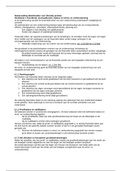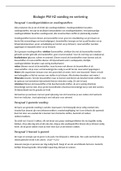Samenvatting
Summary Business Intelligence & Data Management - 2019
- Instelling
- Tilburg University (UVT)
Summary of Business Intelligence & Data Management 2019 Ch: 1, 2, 3, 4, 5, 6, 7, 8, 9, 14, 15 Art: Database Management (1.1, 1.6, 2.1-2.3, 3.1, 3.2, 3.6, 5.1, 5.2), Data Warehouse Design
[Meer zien]














